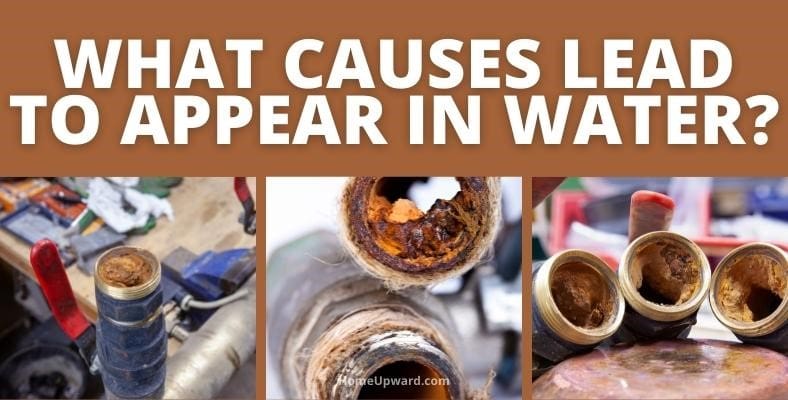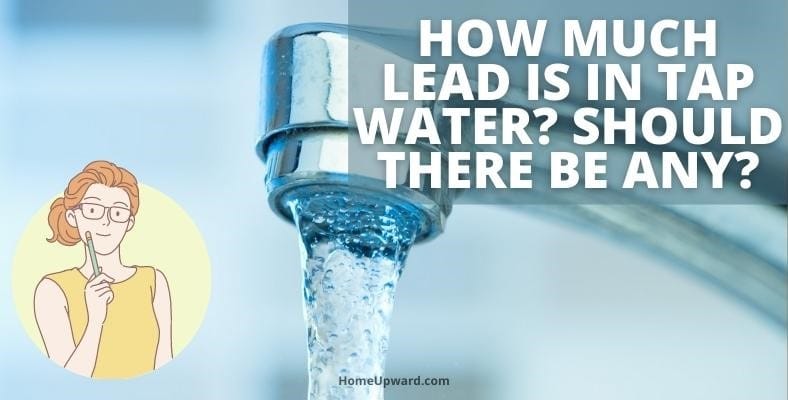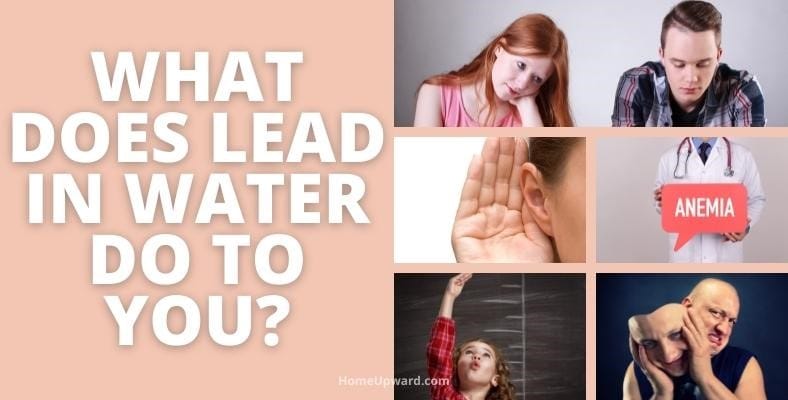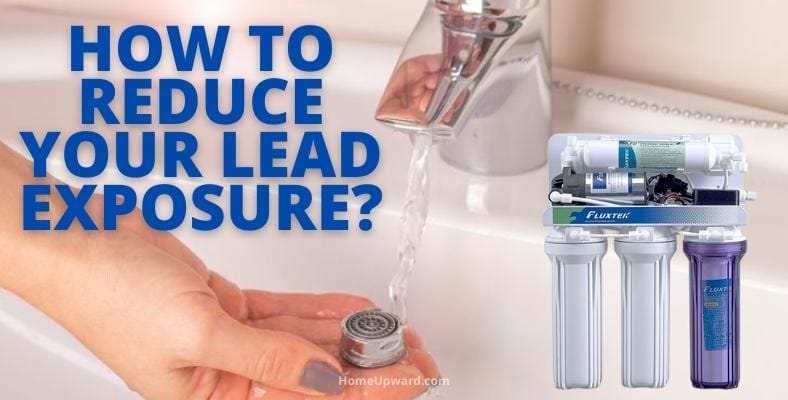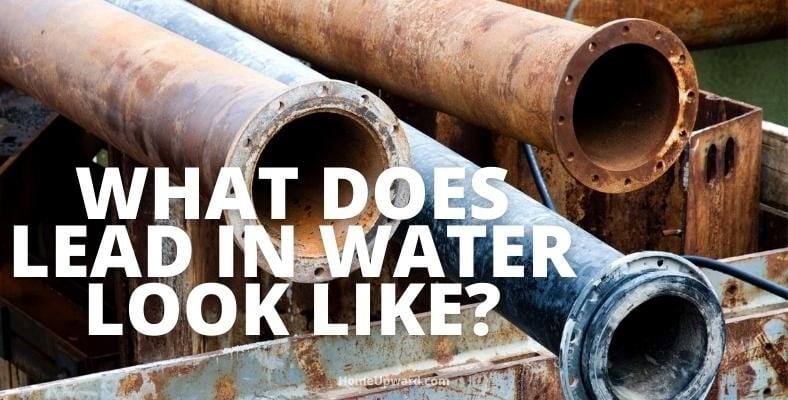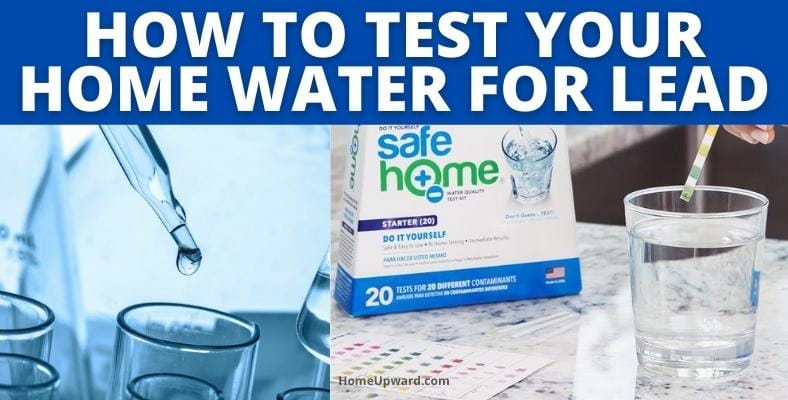Lead in the water can lead to serious health issues like liver and kidney issues and heart issues. For children, water in drinking water can even lead to seizures and death. Frightening, isn’t it?
In this article you’ll learn:
- The signs of lead in your water supply
- To test for lead in water at home
- What to do if you find out you’ve got that problem
- ..and more!
Contents
What causes lead to appear in water?
Lead is not found in water usually. However, it can enter into your water supply if plumbing materials are corroded.
The Safe Drinking Water Act established the highest amount of lead that can be found in water. There can only be a weighted average of .25%, calculated using the pipes, their fittings, plumbing, and fixtures.
Sources of lead in water
The main source of lead in your water is old lead pipes.
Water with low mineral content or a high acidity level can lead to the rusting of the pipes and fixtures in your home. The faucets, lines that connect your home to the city’s water main, and even fixtures can increase the levels of lead in your home.
If your home was built before 1986 or live in a city that connected your home to the water main before 1986, you might discover you have lead pipes.
However, even if your home has brass pipes, you may still have pipes that leak lead – many brass pipes and chrome-plated faucets were soldered together with lead, which can also leak lead into your water supply.
A few factors that lead to the water supply corroding lead pipes include:
- Acidity and alkalinity water levels
- The water’s temperature
- Wear or age of pipes
- How long water sits in place in the pipes
- Protective coatings or scales already in the plumbing
In 1991, the EPA passed the Lead and Copper Rule, designed to address underlying reasons the water will corrode pipes. This rule aims to reduce the amount of corrosiveness in the water coming from cities’ treatment centers to ensure that it won’t corrode the pipes when it comes into contact with your taps.
How much lead is in tap water? Should there be any?
The Environmental Protection Agency (EPA) did not outright ban the use of lead in consumer pipes until September 2020.
Before September 2020, there have been a series of regulations to reduce the amount of lead in consumers’ water supply. The first legislation occurred in 1986 and was quickly changed when Congress revised the Safe Drinking Water Act. It was amended again in 1996, and its sister law RLDWA in 2011 revised what “lead-free” actually means – which, at that point, was a weighted average of .25%.
Basically: if there is a tiny amount of lead in the water, it is okay by the EPA. But no, there shouldn’t be any.
To test if you have been exposed to lead, you’ll need a blood test. The Center for Disease Control (CDC). puts 5 micrograms per deciliter of blood (µg/dL) or more as someone who has lead poisoning. However, since the EPA accounts for other exposure sources, such as general dust, food, etc., the agency set the level of lead that can be allowed in drinking water at 15µg/L.
How much lead is safe in water?
Adults can consume small amounts of lead with few adverse side effects.
However, any lead at all is harmful to young children. The EPA suggests that children drink water that has zero percent of lead.
Because lead is a toxic metal, it can cause very harmful effects in your body. Your body does not have the right system in place to break down lead, so it builds up over time.
The EPA set the safe level at 15 µg/L, but you should only drink water with no lead levels to be completely safe.
What does lead in water do to you?
The health effects of lead exposure cover a lot of negative symptoms. For adults, you’re not likely not see any immediate side effects of drinking water with lead in it.
Adults with built-up lead or ongoing lead exposure may suffer from hypertension, increased blood pressure, or other cardiovascular problems. Adults may notice that their kidney is not working well and they can even experience reproductive issues.
However, fetuses, infants, and small children are more likely to easily feel the effect of lead exposure.
Lead can damage the peripheral and central nervous system, in addition to:
- Learning disabilities that can lead to a lower IQ, hyperactivity, and learning problems
- Behavior problems
- Stunting growth
- Reduced hearing
- Impairing or even stopping the work of blood cells
- Make underlying conditions worse
- Anemia
In some cases, lead exposure can even cause comas, seizures, and even lead to death.
What to do if you find lead in the water in your home?
Good news: Your skin will not absorb lead if it’s in the water. If you find lead in your home at very low levels, it is perfectly safe to shower and bathe in it for both you and any children.
However, if you have high levels of lead in your home, try to reduce your exposure.
How to reduce your lead exposure?
If possible, only drink water you know has been treated or has no lead. Since lead is more likely to appear in warm water, only drink cold water from your pipes. Boiling water does not remove any lead from your water, so water purifiers will be more useful for consumption.
Regularly clean any screens on your faucets. Most showers and taps have a built-in aerator, causing minerals in the water to build up and begin corroding your water supply. If possible, use a water filter on your tap, especially if you get your drinking water from it.
There are also whole-home water filters that can filter lead from the main water supply. You can “flush” your pipes before using them to take a shower, flushing the toilet, doing a load of laundry or dishes, or even just running the tap for a bit.
What does lead in water look like?
You can’t taste, smell, or see when lead is in your drinking water.
The best way to find out if you have lead in your water will be to test your own water. Next, ask the city or whoever services your home or the town if you have a lead service line.
If you do, ask if they have any programs in place to remove the service line that connects your home to the water supply.
You can also ask the city – if you have a lead service line- if they can test your water. Many cities will test the water for their residents if they request a test – check your local municipalities’ rules.
How to test your home water for lead
You can contact your local municipality to find out if you have a lead water supply. There are commercial laboratories that offer water testing and water testing companies that will come out and take samples.
Finally, there are at-home test kits. Some give you instant samples, while some require you to take a sample and then send it into their labs for further testing.
How much does an at-home lead test kit cost?
Depending on the lab and the extent of testing that occurs, an at-home water lead test will cost between $15 to $100. Some cheaper tests offered online offer tests that look for dissolved lead. This test looks for overall lead levels but does not pick up particulate and other minerals.
You want to have a test that looks for total lead, including particles and other mineral levels. Often you’ll need to take two water samples: first-draw and running.
First draw vs running water tests
A first-draw sample will come from your pipes first thing in the morning or after a period of stagnant water. Often, first thing in the morning after a quiet night is the best time to conduct this draw. You will see how much lead has built up in your water supply as it sat for a long period.
A running draw, or running sample, is taken after your water has been running for at least one minute non-stop.
Your first sample will likely have a much higher lead level than the running sample. If the second sample has a level above that 15 µg/L levels, that means there is lead being leaked into your water supply before it has entered your home.
The CDC has information about labs that are nationally accredited.


